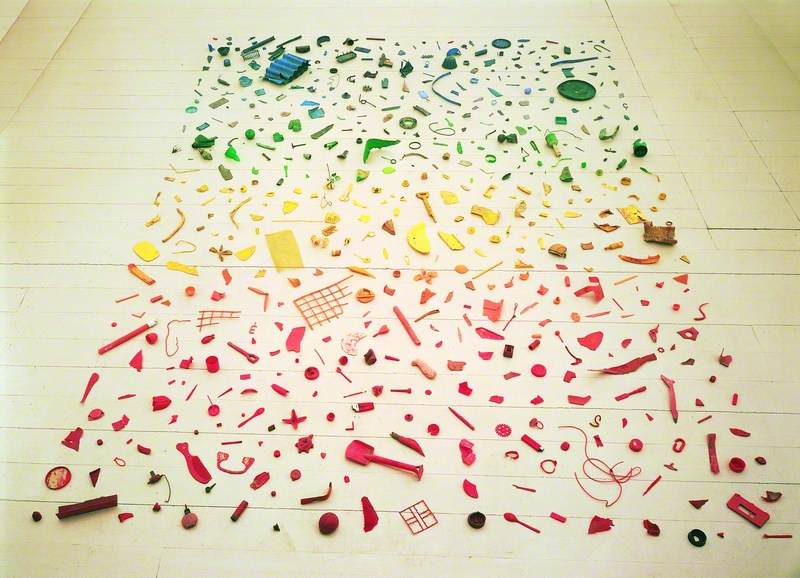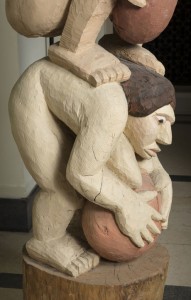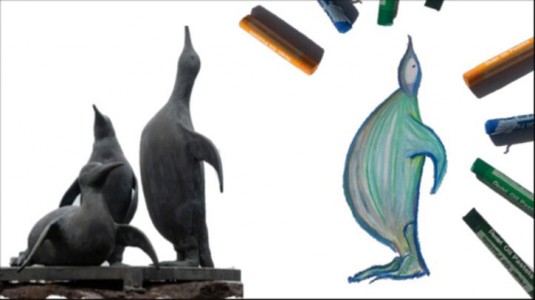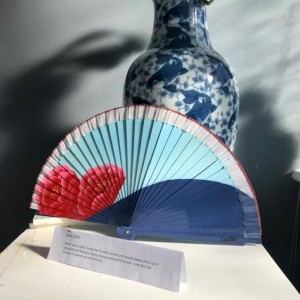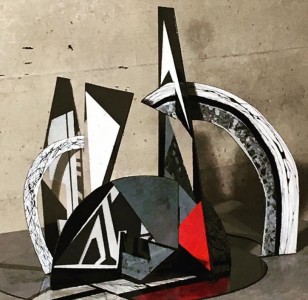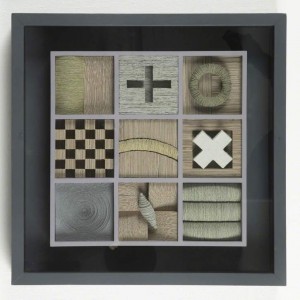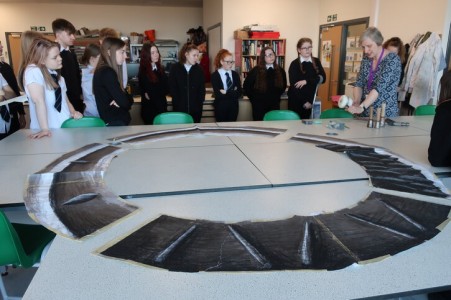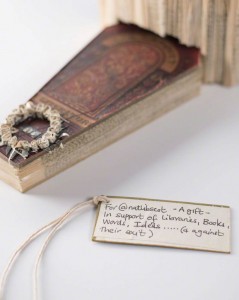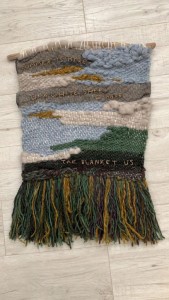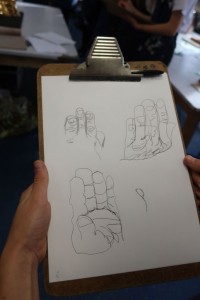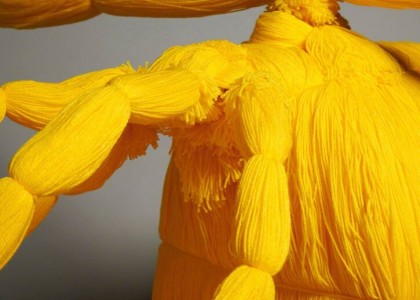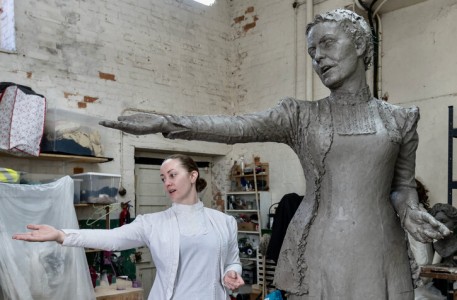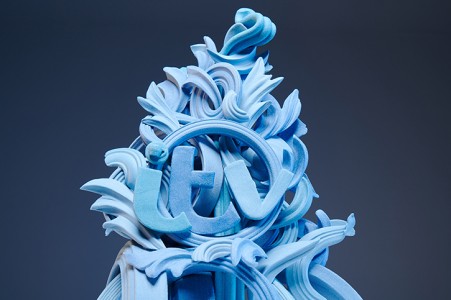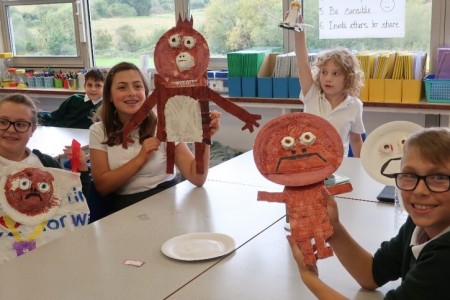Words and colours surround us and can affect our mood and thoughts, as well as alter how we feel about our home, neighbourhood and ourselves.
This week for Home School we invite and provoke you to look at the everyday objects around you as a source of material and inspiration, to make temporary artworks and explore objects as potential characters for short written work.
To make New Stones – Newton's Tones, sculptor Tony Cragg used objects found near to where he lived. The majority of the objects he gathered were plastic. He decided to arrange them by colour in an approximate sequence of Newton's spectrum: dark red, red, orange, yellow, green, blue, dark blue and violet.
Make your own colour sculpture
You will need:
- A flat surface to work on
- Access to objects around your home
- A piece of paper
- A pencil or a biro
Look around your home and gather objects in the same colour, for example, yellow. Go on a colour hunt – check the drawers, look in the fridge and assemble all the objects you have found on a flat surface (a table, a rug or a floor).

Have fun organising your objects in different ways, for example:
- From the tallest to the shortest
- The heaviest to the lightest
- The smoothest to the most textured
- The most useful to the least useful
- The most expensive to the cheapest
- The funniest to the most boring
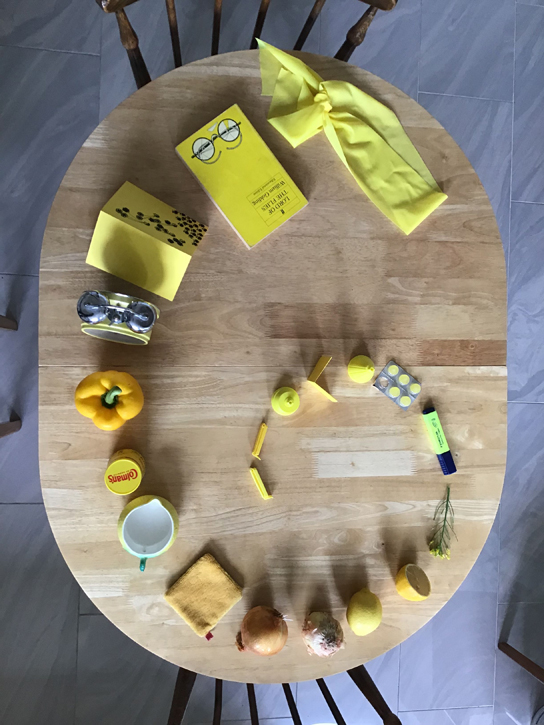
Have a think: what other ways you can organise your objects?
Pause when you find your arrangement eye-catching, unusual, pleasing, interesting or thought-provoking. Maybe your objects look like they are standing in a long queue? Maybe they are piled up high on top of each other? Could some be grouped together, while others stand apart?
Now choose an object from your collection. Think about how it relates to the others. It has a colour in common, but in what other ways is it different, or similar, to everything else you have gathered?
Make a list of the qualities that make your object similar, unique or different. Be as specific as you can with your descriptions. Explore the object with all your senses – how does it smell, taste, feel, look? What sound does it make? You might even need to make up a new word to describe the qualities of the object you are observing!
For example, a lemon:
- Oblong
- Dimply skin
- Tough
- Firm
- Sour
- Juicy
- Zesty
- Sparkly
- Dull noise
Read through your list. Are you surprised by any of your observations? If the object you picked was a person, how do you think they would behave? Would they be capricious, kind, selfish, powerful, quiet, funny, friendly or angry?
Now place your object back and think again about its position in the arrangement. What does it suggest? What sort of situation could your object be part of? Is there a story about your object that could be told?
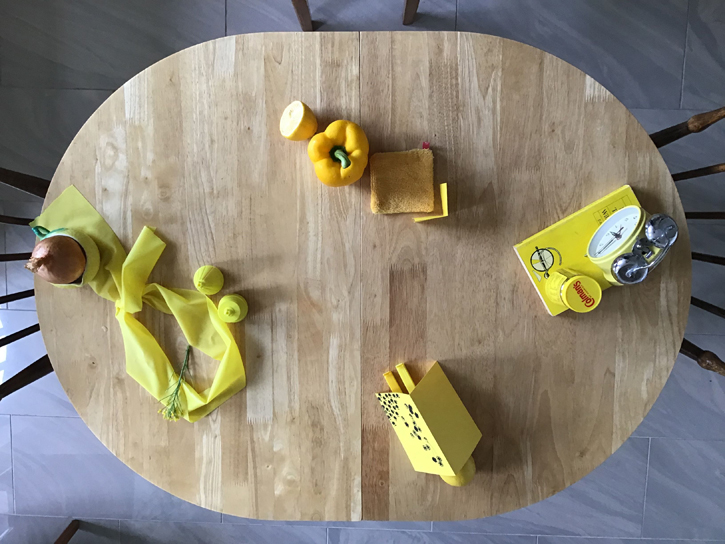
For example:
'My lemon looks like it's in the first row, watching and observing.'
Write a paragraph about your object as if it were a person, describing its habits, character and the way it perceives the world using as many words from your list as you can.
For example:
'Lemon was tough. He would push through a crowd in the playground and claim the best viewing spot to observe a game. Lemon would keep his sparkly eyes and dimply face calm, pretending he didn't really care who won. He just came to watch.
But this time it looked like a fight. Big Pepper was picking on a new guy, Tiny Clip who was trembling with fear. Lemon's fists clenched. He stepped forward. 'Stop it,' he said in his firm voice, his lips dry, 'or there will be tears.''
What can you create at home? Share photographs of your colour arrangement sculptures and written work with us on Twitter or Instagram by tagging @artukdotorg with the hashtag #ArtUKHomeSchool.
Ania Bas, artist and writer who works across text, performance, publishing and social engagement (www.aniabas.com)
